This is updated version of a post by contributor Kurt Sevits, originally published on August 18th 2015.
Construction is underway on the Modera Belmont, a six-story mixed-use building by SERA Architects and Mill Creek Residential Trust. The U-shaped building will include 200 residential units above ground-floor retail, with a courtyard facing SE 6th Avenue. A basement level will include parking for 105 vehicles, while bike parking will be split between the basement and ground floors for a total of 302 spaces.
The building will take up the entire block bounded by SE 6th and 7th avenues and Belmont and Morrison streets. The lot was most recently home to the Oregon Ballet Theatre, as well as surface parking. The Portland Business Journal reported in Oct. 2014 that OBT was selling the site to Mill Creek to relieve some of its debt. The ballet has now relocated to an existing building in South Waterfront.
The building previously located on the site was built in 1940 as the East Portland branch of the First National Bank of Oregon, to a design by Barrett and Logan. In the 1984 Historic Resource Inventory, the property was evaluated as potentially eligible for listing in the National Register as part of a Historic District.
The design of Modera Belmont has changed significantly since its original concept as presented at design advice in February. In response to concerns from the Design Commission, the entire building was redesigned to incorporate mainly brown brick and white metal panels rather than the original variety of metal panels and fiber cement board.
Since the redesign, a number of other changes have been made to the design, including converting all of the street-facing live-work units on the ground floor to retail space. The designers also have made alterations to the exterior of the building, adding balconies and changing the shapes of the cutouts so as to better break up the facade of the building.
Two 6th-floor units facing 7th Avenue were removed in favor of a terrace, providing more variation in height along that side of the facade.
The Design Commission gave the project final approval to the project on August 6th 2015, stating that as designed, the building is a much better fit for the neighborhood than the original proposal:
“The most recent revisions and conditions of approval imposed at the August 6th hearing, result in a building that is more compatible with the smaller scale, materials, and details of the 1/4 block, masonry buildings in the surrounding area and adjacent historic district, as well as a more coherent composition. As revised, the Modera Belmont project will be a significant contribution to the diverse architecture and active pedestrian environment that characterizes the Central Eastside sub district.”
The first building permits for the Modera Belmont were issued in December 2015.
Plans, Elevations and Sections
- Plan – Vicinity
- Plan – Site / Landscaping
- Plan – Parking
- Plan – Ground
- Plan – Levels 2-5
- Plan – Roof
- Elevation – South
- Elevation – East
- Elevation – North
- Elevation -West
- Elevations – Courtyard
- Section – East / West
- Section – North / South
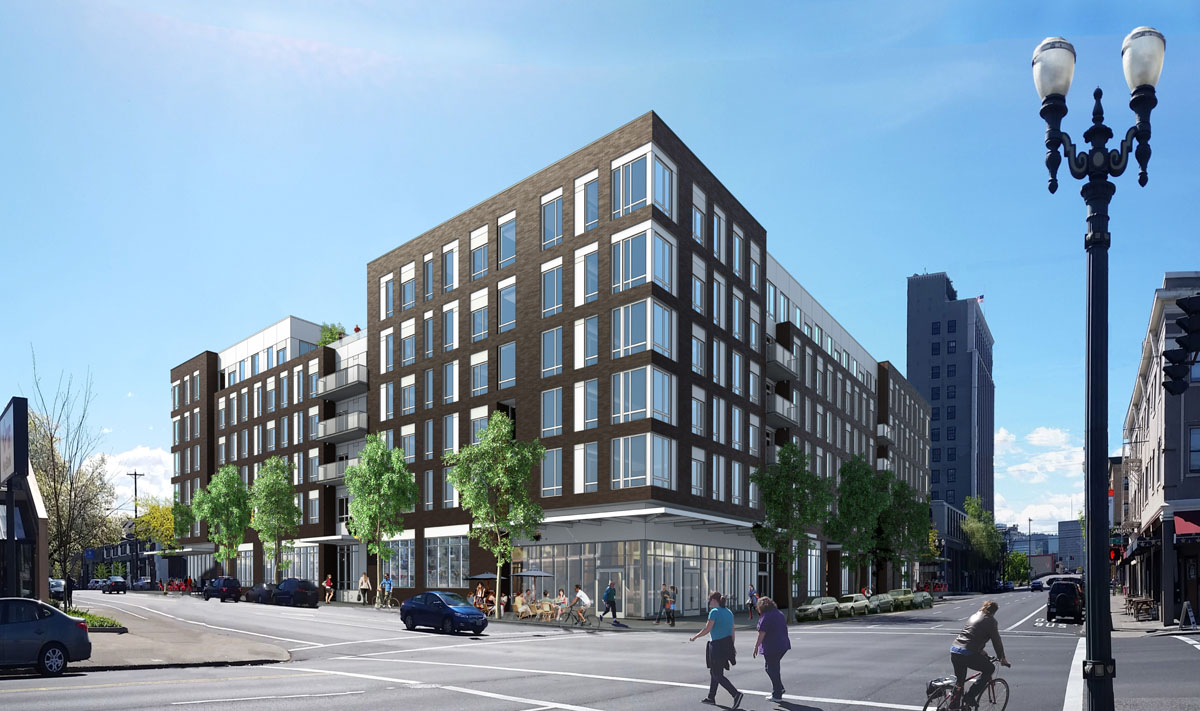
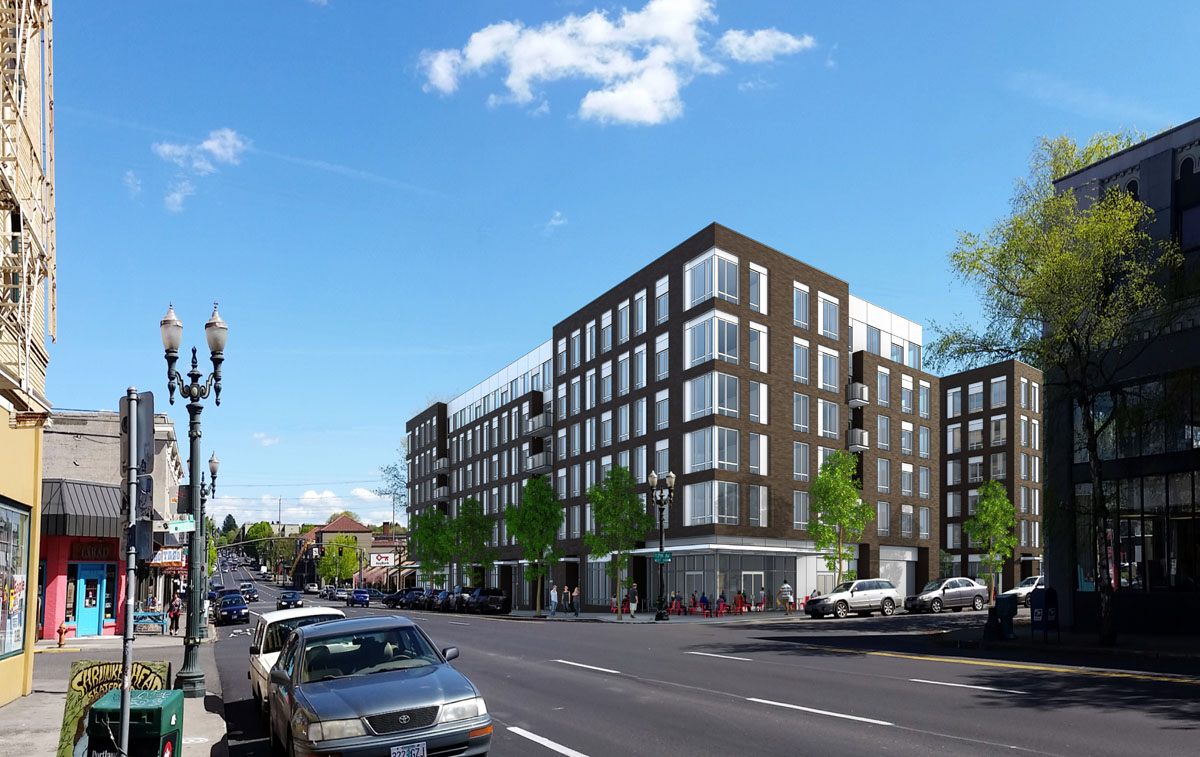
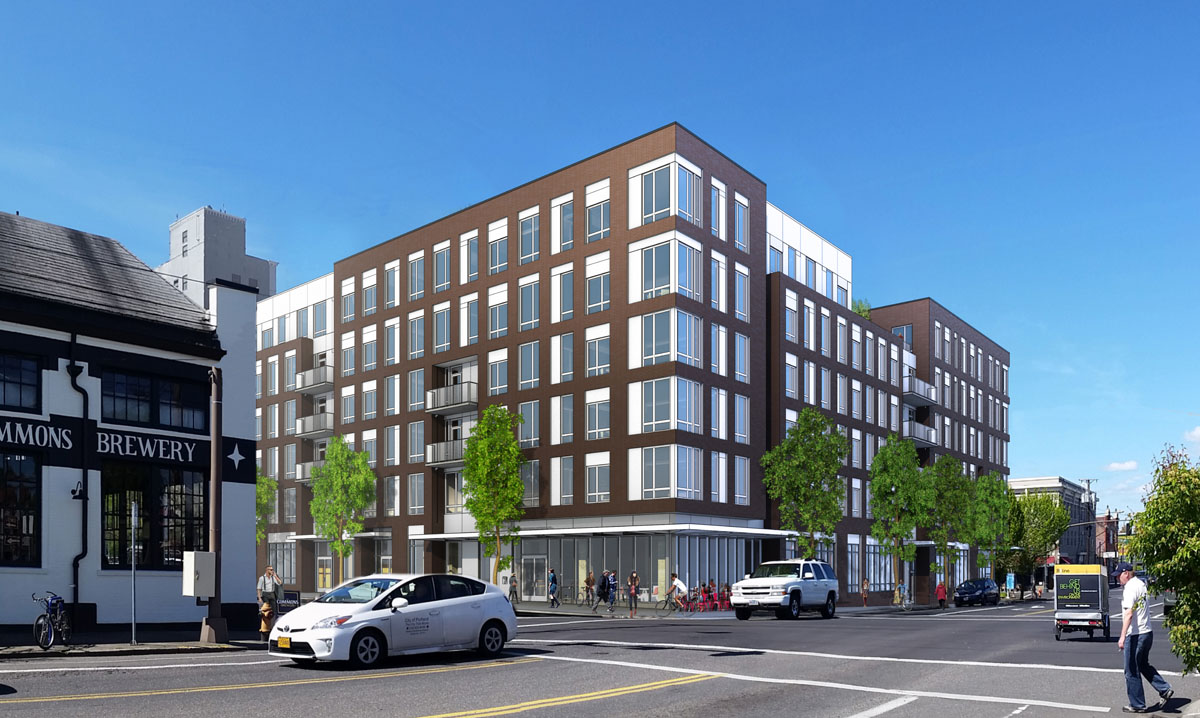
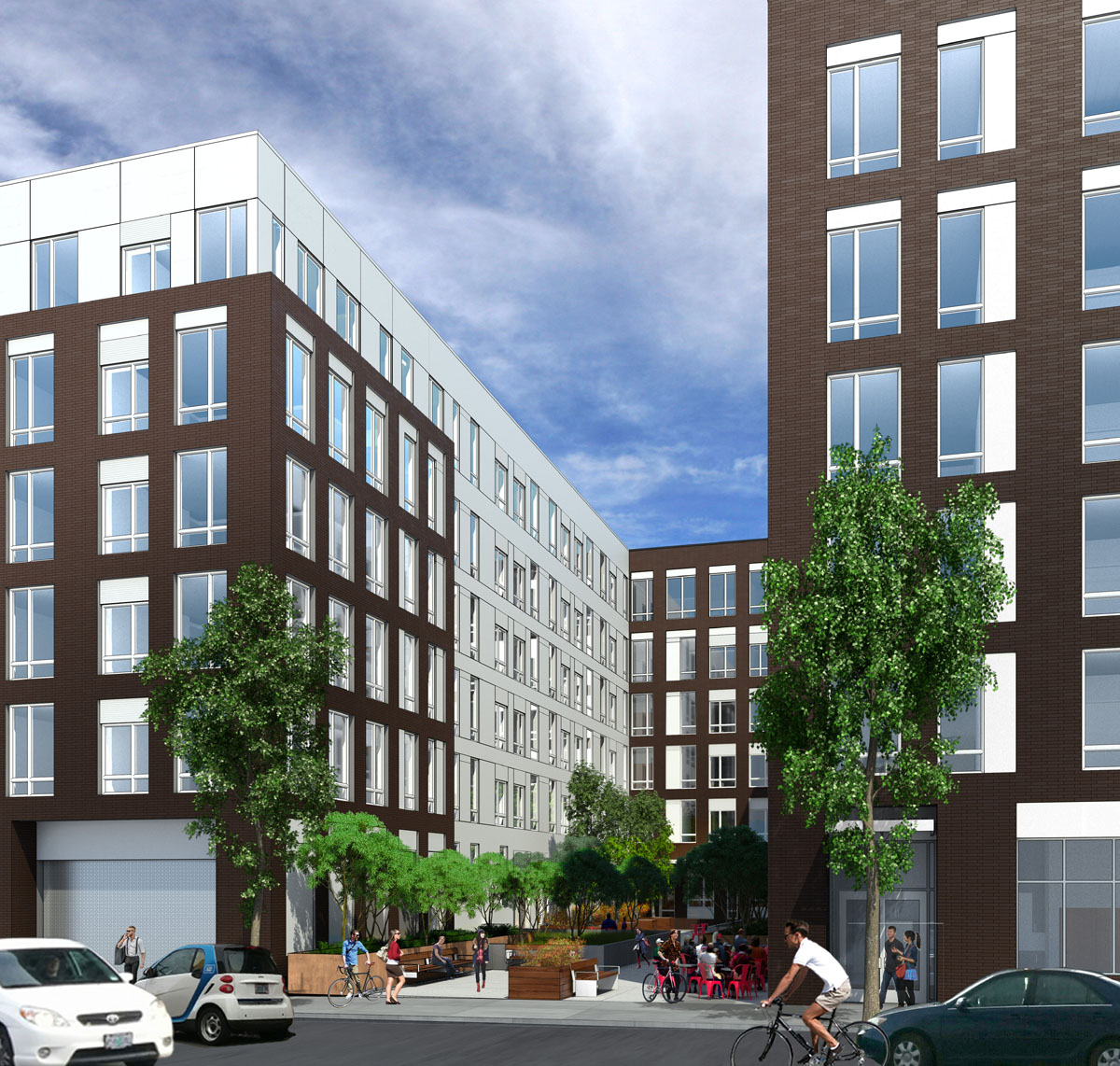
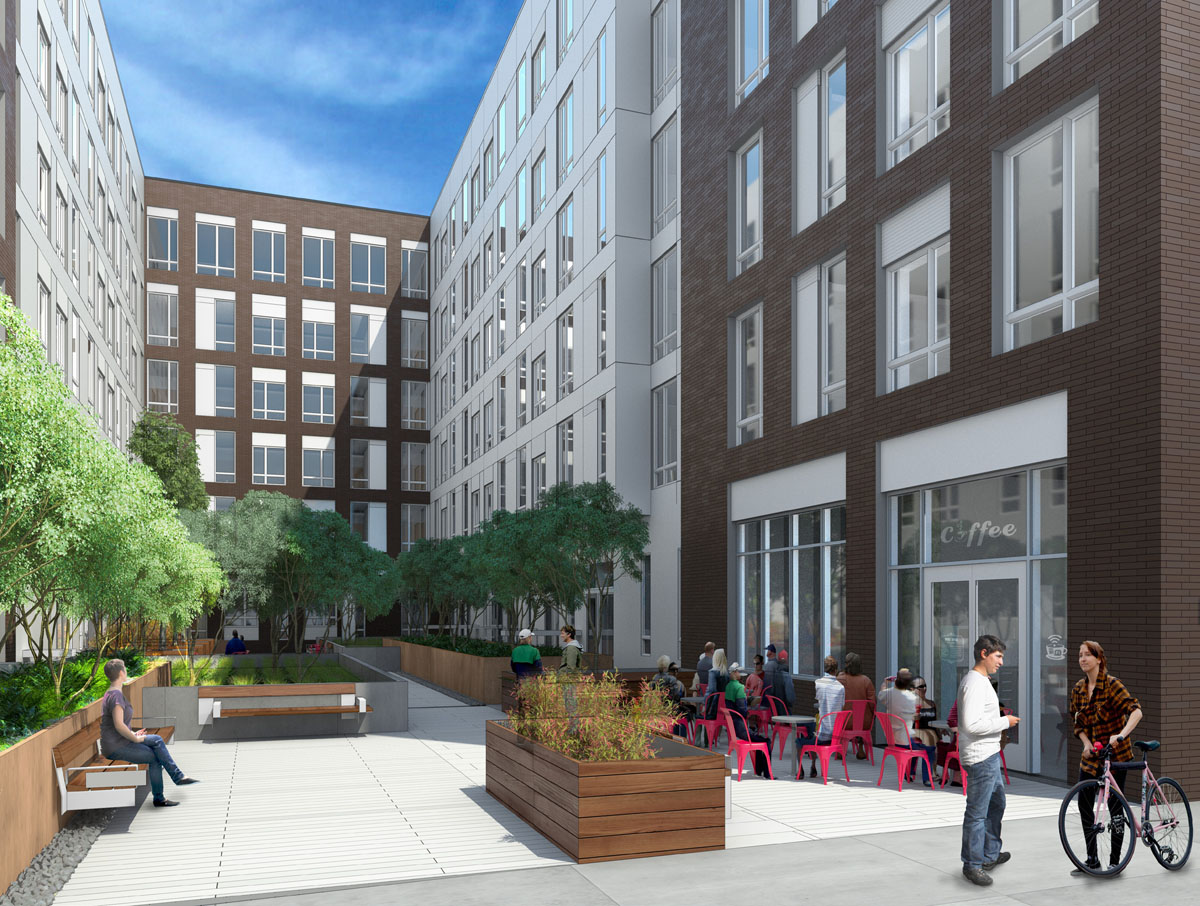
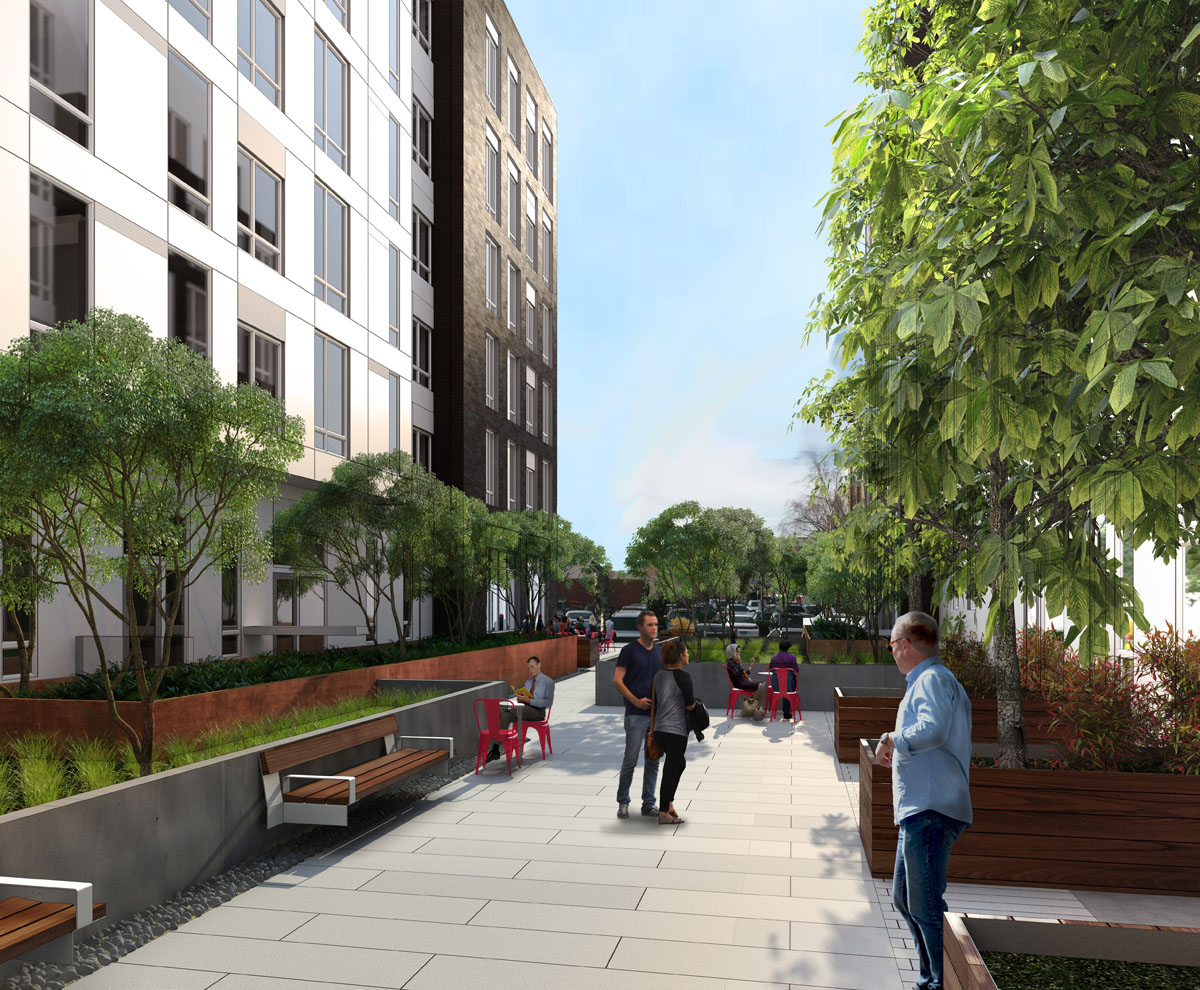
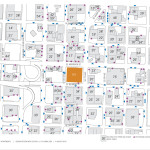
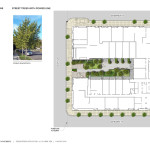
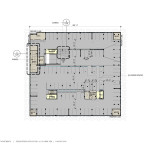
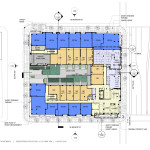
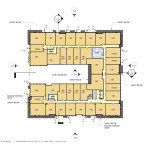
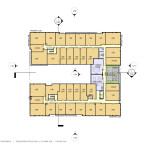
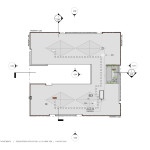
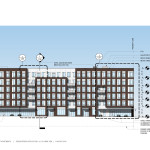
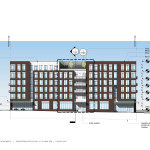
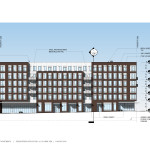
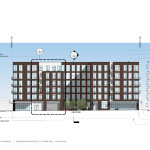
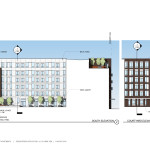
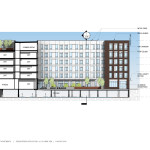
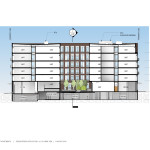
Thank you for your work, Why do all the designs for these news buildings look the same?
Horrid. To anyone planning on moving in to this cookie cutter yuppie condo box, no one wants you here. [removed – please try to keep language polite and civil]
^^^^^THIS
Try directing your anger in the right direction—the architects and developers who are content to build bland boxes with poor floor plans. I agree this isn’t a great building, but the people who will move into it need a place to live near downtown. Maybe if there was more housing, they could make a statement by choosing not to live in buildings like this, but that simply isn’t the case. If you want to live near downtown, and can’t afford the Pearl, this is what you are stuck with. I know, because I live in a very similar building.
this city is being destroyed.
Please explain further. Though I don’t particularly like this design, taking down a low rise building with a surface parking lot is going to improve the walkability and livability of this neighborhood.
This is the type of hyperbolic intellectual laziness that I look forward to seeing increasingly marginalized as Portland becomes a more urban, dense city. If cities aren’t your thing you can always go gentrify Astoria. The rest of us will look to the great cities of Europe for our inspiration — including pressing the City to fund as much subsidized/affordable housing as possible in the name of maintaining social and economic diversity.
That’s funny…. long time residents can just move away. Nice planning solution. Portland is not a “great city” and it never will be. It WAS an affordable, comfortable, easy backwater. Turning it into a generic enclave for the very white and wealthy is what you are advocating (whether you actually believe that or not). The city will never care enough about the poor to ensure the development of an adequate supply of housing. And your “great cities” of Europe do not destroy their historic centers and neighborhoods in order to enrich a handful of dreadful developers.
Portland had social and economic diversity. People could live here and pay $500 a month for an apartment in this very area. They didn’t need government programs or special housing initiatives. They paid the rent on their own. Then the developers came along, tore down those buildings where the social and economic diversity lived so that they could build $2,000 a month 1 bedroom apartments.
Rinse. Repeat.
False. The new apartments are being built where parking lots, vacant lots or unremarkable commercial buildings previously stood. With very few exceptions, they aren’t replacing other apartment buildings. The total unit count is increasing.
And rents are rising so people are leaving….. not hard to understand. Take a working class neighborhood where you could get a cheap apartment, build new buildings (even if you only build on vacant land) and soon you have a new trendy neighborhood where rents start at $1500 a month.
Yes, because the bank and surface parking lot this building is replacing was such an architectural marvel that deserved historical landmark status, the parking lot in particular :/
The building this replaces had some nice details, but did not contribute much to the neighborhood. It had large, poorly maintained asphalt setbacks all around it with random curbs and driveways adjacent to the sidewalk. This is a great place to increase density. I hope the City will respond by creating a usable bike/ped connection over the Morrison Bridge, and designate 6th as a greenway (with diversion) for north/south connections. The west-facing courtyard seems like a great amenity, IMO
The negative response to this building may be overstated and inflammatory but suggest a reaction to what this building is the product of: a national developer agnostic of context looking for a good return with a one size formula and a design firm for hire to do its bidding. It is not mean spirited to point out this is not good architecture. The architects know this is not good architecture The Design Commission knows which is why they put this project through the paces. But…. Perhaps if this is what we are going to get in this current boom why not simplify the process and costs and provide examples of buildings we want to see built. For instance on this design, what is with all the random jigsaw cuts in the top massing? Are we pretending this isn’t one building but rather a collection of buildings? But then why the same materials? Why not enforce some rational elegance? The dark brick should be the lower massing and then have a clear line where the massing steps back and the skin becomes lighter. Lose the random acts of silly cut outs. More to the point: if you don’t know what you’re doing, keep it simple…
David, I agree that what people are reacting to is a product of REIT scale development entities doing what they do best; maximizing ROR through economies of scale. We discussed this same issue in the comment thread for the firehouse/Touche building in NW. There’s nothing inherently bad about bland architecture. In fact, I’d argue that a city of good background, fabric buildings, is potentially a better urban experience than a collection of sculptural one-offs. Where we get into trouble though is when we lose the underlying plat, and the hierarchy of building to block and block to district. Buildings this scale make pathetic gestures at diversity – articulation of the facade and variation of materials makes a superficial gesture toward what people really relate to, and that is a human scaled ecosystem of buildings on a block. Like much of Portland, the basic module around here is the 50×100 lot, and in some cases, these were even split in half. Bulk and scale aren’t the problem. Seattle’s Pioneer Square is built out at 4-6 stories with near total lot coverage, but for the alleys. People relate to the scale of of individual building frontages, which range from 30 to 120′ or so.
I believe Portland must seriously consider a maximum lot size in many of its commercial and mixed use zones to prevent the erosion of the granular diversity that makes it urban. You can have pretty intense development, at high densities and not achieve something like an urban feel. Suburban places with grain based on the speed of the car are not urban. Cities developed at the scale of the pedestrian’s walking speed have a truly urban character. Again this has nothing to do with massing or height. My experiences traveling have reinforced this difference in character. Phoenix/Scottsdale’s metro is around 4.5 million and yet it is less urban than the Cinque Terre towns in Italy, even they each have a population around 1,000.
Good architecture or bad architecture, the underlying problem is economic. If it took unimaginative architecture to make the city affordable and diverse the vast majority will take it.
Huh. I actually kind of like the silly thing, more or less. Kinda sorta. It’s certainly better looking than the first design they submitted. With that said, I’d certainly rather see buildings of this sort constructed with more durable materials, such as concrete. I recently purchased a condo in the central city of this type (concrete, top to bottom) and it’s great. Really great. I can’t hear my neighbors and it’s very solidly built and likely to stand for many generations.
The new type of residential building construction as exemplified by the building under construction is not built with the intention of it lasting more that forty years, or so I’m told by those in the business. The owners will get their money out of their investment, and then some, and then it’ll be torn down to make way for….more of the same.
Maybe it would be cheaper still to simply throw up some more tents, as the neighborhood is already awash with them anyway…
Christopher
I have seen better looking college dorms . . . .
Maybe If the City of Portland required cookie cutter boxes like this to have 4 by 8 ft. balconies it would make them better functioning urban living spaces for the tenants and public that have to look at these flat boxes.
Portland Native.
Agreed! I would be claustrophobic in these kinds of apartments that are being built. There is no outdoor space, and the best you can do is crack a window. At least in my dorm room I could open my windows completely.